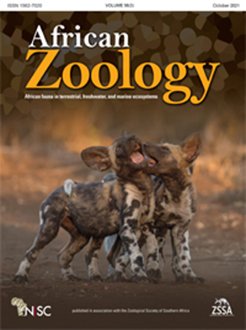Most migratory aquatic birds are regarded as reservoir hosts for many parasitic diseases, including digenetic trematodes that cause significant losses to farmed fish. However, in Tanzania, studies of birds focus more on their species diversity and patterns of speciation than their parasites. The current study attempted to use molecular methods, mitochondrial DNA (mtDNA), cytochrome c oxidase subunit I (COX-1) in particular, and ribosomal DNA (rDNA) i.e. 28S rRNA and internal transcribed spacer (ITS1-5.8S-ITS2) regions, to investigate the occurrence of intestinal echinostomatoid species recovered from fish-eating birds, i.e. Grey Herons (Ardea cinerea) and Great Cormorants (Phalacrocorax carbo), from Mwanza Gulf in Lake Victoria. Both morphology and molecular markers revealed the presence of three echinostomatoid species: Stephanoprora amurensis and Petasiger phalacrocoracis in P. carbo, and the Patagifer vioscai in A. cinerea. The present species are reported for the first time in African bird species.
How to translate text using browser tools
21 October 2021
Occurrence of Echinostomatoids (Platyhelminthes: Digenea) in Great Cormorant (Phalacrocorax carbo) and Grey Heron (Ardea cinerea): First Insights into the DNA Barcodes from Lake Victoria, Tanzania
Fred Chibwana,
Jestina Katandukila
ACCESS THE FULL ARTICLE

African Zoology
Vol. 56 • No. 3
October 2021
Vol. 56 • No. 3
October 2021
Echinostomatoidea
fish-eating birds
molecular markers





